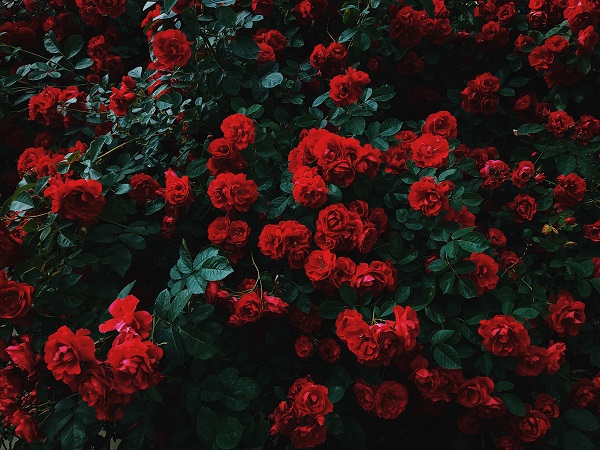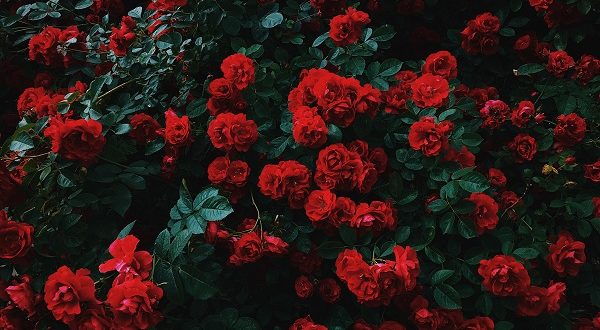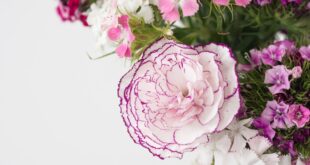With the roses pruned and starting to shoot away, it is timely to go over some of the basics of spraying in relation to keeping yourself and others safe and to achieve the best results. I appreciate that not everyone sprays and for a variety of reasons, all perfectly valid as well but it is worthwhile to brush up on some of the basics of using them.
Most chemicals used in the home garden are generally lower in toxicity than what commercial growers and nurserymen use. However precautions still need to be taken. However, if applied correctly and a few rules are followed, then they are safe to use.
A lot of this information will (I hope) be common sense, But it never ceases to amaze me how each year, people run into problems by not following a few simple rules.

Identify the problem: Before getting your sprayer out, identify the problem you want to control and also the options available to control it. Also ask yourself is it really necessary to spray if the problem is only minor.
Read the label! Before you start, read the label and follow the instructions given to the letter as it contains all the information you will need to get the best results and to keep safe. If you don’t understand what it means, ask someone like a consulting rosarian in your local rose society.
The label will tell you what pests and diseases the chemical will control, what precautions need to be taken, what rate of chemical will be applied and any other instructions for use. Make sure you use the rate suggested on the label as you could run into problems with control.
Again, all this should be common sense but I have heard many stories of people running into problems because they either haven’t read the label or have gone against the label recommendations. Depart from the label at your own peril!
Timing of application: In general, you should spray when it is fine and calm, although it is easier said than done at certain times of the year. It is good to spray in the early morning or evening as the bees are less active and it’s also more comfortable at this time during the summer than in the heat of the day.
If there is a breeze, spray with it rather than against it. If you are spraying for weeds with a herbicide, then I would stop altogether as there is a good chance you will catch some desired plant of yours.
Mixing your sprays: Most cases of chemical poisoning occur at the mixing stage and this is due to the fact that the concentrated form is being handled rather than the diluted version in your spray tank. Chemicals can enter the body either through the skin, orally through the mouth or inhaling fumes, dusts and mist into the lungs. So cover up and wear protective clothing such as goggles, gloves, an apron/protective suit and a respirator. Have a source of water nearby so can quickly wash anything off if it gets on you and clean up any spills immediately. Don’t eat, drink or smoke during mixing or spraying itself. Mixing chemicals: add to a spray tank half-filled with water and wettable powers added as a paste. Follow instructions on the chemical label.
First Aid: The back of the containers or packets contain first aid information which you should follow if you run into problems. If you start to feel unwell after spraying, then seek medical advice straight away – you can never be too careful. You can also call the National Poisons Centre for advice on 0800 764 766 but they can only help if you know what the chemical is that you have come into contact with.
Cleaning up: After spraying, give your sprayer a good wash out. If you use weedkillers as well, it might pay to have another sprayer just for them as residues can still remain no matter how hard you clean your sprayer.
Once that is done, wash your gloves before removing. Make sure you wash your hands and face, then have a shower.
Storing chemicals: There are a couple of important points when storing chemicals. First, store them in their original container that you purchased them in not any other container and certainly not anything that has held food or drink. I have heard of some horror stories involving soft drink bottles etc and people, particularly children being poisoned because they had chemicals in them.
Store chemicals away from children, animals etc. Lock them up or put them high up in a cupboard or shelf that is dry and well ventilated.
These are just some basic hints to ensure that you don’t run into problems when spraying. It is up to all of us to use and apply chemicals wisely and minimise the effects of such use on ourselves, others and the environment.
In the rose garden for September
- Apply fertiliser at the recommended rates this month. Apply away from the crown of roses and water in well for best results.
- Apply mulch to your roses. There is a vast range of materials around to use. Keep mulch away from the crowns and for the likes of bark, make sure it is well composted before use.
- Keep an eye on new growth coming away and cut back any stems that the buds fail to come away.
By Hayden Foulds
Hayden also serves as Deputy Chairman of the World Federation of Rose Societies Rose Trials Committee amongst other rose endeavours.










Join the Discussion
Type out your comment here:
You must be logged in to post a comment.